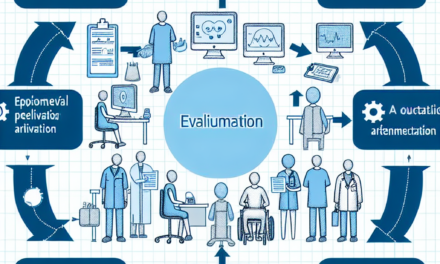Enhancing Home Mobility: A Guide to Installing Lifts
As our population ages and the need for accessible living spaces increases, home mobility solutions have become essential for many households. Installing a lift in your home can significantly enhance mobility, making it easier for individuals with mobility challenges to navigate their living spaces. This comprehensive guide will explore the various aspects of installing lifts in homes, including types of lifts, planning and design considerations, installation processes, costs, and maintenance. By the end of this article, you will have a thorough understanding of how to enhance home mobility through lift installation.
1. Understanding the Types of Lifts
Before diving into the installation process, it is crucial to understand the different types of lifts available for residential use. Each type has its unique features, benefits, and suitability for various home environments.
1.1. Stair Lifts
Stair lifts are one of the most common mobility solutions for homes with stairs. They consist of a chair that travels along a rail mounted to the staircase. Stair lifts are ideal for individuals who have difficulty climbing stairs but can still transfer in and out of a chair.
- Types of Stair Lifts: There are straight stair lifts for straight staircases and curved stair lifts for staircases with landings or turns.
- Benefits: Stair lifts are relatively easy to install and can be removed if necessary. They are also less expensive than other lift options.
1.2. Platform Lifts
Platform lifts are designed for individuals who use wheelchairs or scooters. They provide a flat platform that can accommodate mobility devices, making them suitable for both indoor and outdoor use.
- Indoor vs. Outdoor: Indoor platform lifts are typically used in homes with multiple levels, while outdoor lifts can be installed to provide access to porches or decks.
- Accessibility: Platform lifts can be installed in various locations, including garages, basements, and even in the middle of a staircase.
1.3. Residential Elevators
Residential elevators are a more permanent solution for enhancing mobility in multi-story homes. They are designed to transport individuals between floors and can accommodate multiple passengers or mobility devices.
- Space Requirements: Installing a residential elevator requires more space than other lift types, including a dedicated shaft or hoistway.
- Customization: Residential elevators can be customized to fit the aesthetic of the home, with various finishes and designs available.
1.4. Wheelchair Lifts
Wheelchair lifts are specifically designed for individuals who use wheelchairs. They can be installed in various locations, including homes, schools, and public buildings.
- Vertical vs. Inclined: Vertical wheelchair lifts move straight up and down, while inclined lifts travel along a slope.
- Safety Features: Most wheelchair lifts come equipped with safety features such as automatic doors, emergency stop buttons, and safety sensors.
1.5. Choosing the Right Lift
When selecting a lift for your home, consider the following factors:
- Space Availability: Assess the available space in your home to determine which type of lift will fit best.
- User Needs: Consider the mobility needs of the primary user, including whether they use a wheelchair or require assistance.
- Budget: Different lifts come with varying price points, so it’s essential to establish a budget before making a decision.
2. Planning and Design Considerations
Once you have determined the type of lift that best suits your needs, the next step is to plan and design the installation. This phase is critical to ensure that the lift is functional, safe, and aesthetically pleasing.
2.1. Assessing Your Home’s Layout
The layout of your home will significantly influence the installation of a lift. Consider the following:
- Staircase Configuration: For stair lifts, evaluate the configuration of your staircase, including width, turns, and landings.
- Floor Plan: For residential elevators and platform lifts, assess the floor plan to determine the best location for the lift shaft or platform.
2.2. Building Codes and Regulations
Before proceeding with installation, familiarize yourself with local building codes and regulations. Compliance is essential for safety and legality.
- Permits: Most installations will require permits from local authorities. Check with your local building department for specific requirements.
- Accessibility Standards: Ensure that your lift meets accessibility standards set by the Americans with Disabilities Act (ADA) or other relevant regulations.
2.3. Safety Features
Safety should be a top priority when planning your lift installation. Consider the following safety features:
- Emergency Stops: Ensure that the lift has an emergency stop button that is easily accessible.
- Safety Sensors: Look for lifts equipped with safety sensors that prevent operation if an obstruction is detected.
2.4. Aesthetic Integration
While functionality is crucial, the lift should also blend seamlessly with your home’s design. Consider the following:
- Color and Finish: Choose colors and finishes that complement your home’s interior design.
- Location: Select a location for the lift that minimizes disruption to your home’s layout and flow.
2.5. Consulting Professionals
Engaging professionals during the planning phase can save time and ensure a successful installation. Consider hiring:
- Architects: An architect can help design the lift installation to fit your home’s layout.
- Contractors: A licensed contractor can ensure that the installation meets all building codes and safety standards.
3. The Installation Process
The installation process for home lifts can vary depending on the type of lift chosen. Understanding the general steps involved can help you prepare for the project.
3.1. Pre-Installation Preparations
Before installation begins, several preparations must be made:
- Site Preparation: Clear the installation area of any furniture or obstacles to provide a safe working environment.
- Power Supply: Ensure that there is an adequate power supply for the lift, especially for electric models.
3.2. Installation Steps for Stair Lifts
The installation of a stair lift typically involves the following steps:
- Rail Installation: The rail is mounted to the staircase, ensuring it is level and secure.
- Chair Assembly: The chair is assembled and attached to the rail, followed by testing for smooth operation.
3.3. Installation Steps for Platform Lifts
Installing a platform lift involves more complex steps:
- Platform Assembly: The platform is assembled according to the manufacturer’s instructions.
- Electrical Connections: Electrical connections are made to ensure the lift operates correctly.
3.4. Installation Steps for Residential Elevators
Residential elevator installation is the most complex and typically requires professional assistance:
- Shaft Construction: A shaft is constructed to house the elevator, which may involve significant structural changes.
- Elevator Installation: The elevator car is installed within the shaft, followed by electrical and safety system connections.
3.5. Post-Installation Testing
After installation, thorough testing is essential to ensure safety and functionality:
- Operational Testing: Test the lift multiple times to ensure it operates smoothly and safely.
- User Training: Provide training for users on how to operate the lift safely.
4. Costs and Financing Options
The cost of installing a lift can vary widely based on several factors, including the type of lift, installation complexity, and additional features. Understanding these costs and exploring financing options is crucial for budgeting.
4.1. Cost Breakdown by Lift Type
Here’s a general breakdown of costs associated with different types of lifts:
- Stair Lifts: Typically range from $2,000 to $5,000, depending on the model and installation complexity.
- Platform Lifts: Generally cost between $3,000 and $15,000, depending on size and features.
- Residential Elevators: Can range from $20,000 to $50,000 or more, depending on customization and installation requirements.
4.2. Additional Costs to Consider
In addition to the base cost of the lift, consider the following additional expenses:
- Installation Fees: Professional installation can add several thousand dollars to the total cost.
- Maintenance Costs: Regular maintenance is necessary to ensure safety and functionality, which can cost several hundred dollars annually.
4.3. Financing Options
Many homeowners may find the upfront costs of installing a lift daunting. Fortunately, several financing options are available:
- Home Equity Loans: Homeowners can borrow against their home’s equity to finance lift installation.
- Personal Loans: Unsecured personal loans can provide the necessary funds for lift installation.
- Government Grants and Programs: Some local and federal programs offer financial assistance for home modifications for individuals with disabilities.
4.4. Insurance Considerations
Before installing a lift, check with your homeowner’s insurance provider to understand how the installation may affect your policy:
- Coverage: Some policies may cover the cost of installation or provide liability coverage for accidents.
- Adjustments: You may need to adjust your policy to reflect the new installation.
4.5. Long-Term Value
While the initial investment in a lift may seem high, consider the long-term value it provides:
- Increased Home Value: A well-installed lift can increase your home’s resale value, especially in markets with a high demand for accessibility features.
- Improved Quality of Life: Enhancing mobility can significantly improve the quality of life for individuals with mobility challenges.
5. Maintenance and Safety Checks
Once your lift is installed, regular maintenance and safety checks are essential to ensure its continued functionality and safety. Understanding the maintenance requirements will help you keep your lift in optimal condition.
5.1. Regular Maintenance Schedule
Establishing a regular maintenance schedule is crucial for the longevity of your lift:
- Monthly Checks: Inspect the lift for any visible signs of wear or damage, including the rail, chair, or platform.
- Annual Professional Inspections: Hire a qualified technician to perform a thorough inspection and maintenance check at least once a year.
5.2. Common Maintenance Tasks
Some common maintenance tasks include:
- Lubrication: Regularly lubricate moving parts to ensure smooth operation.
- Battery Checks: For battery-operated lifts, check the battery condition and replace it as needed.
5.3. Safety Checks
Safety checks are essential to prevent accidents and ensure the lift operates correctly:
- Emergency Features: Test emergency stop buttons and safety sensors regularly to ensure they function correctly.
- Weight Limits: Ensure that users are aware of the weight limits for the lift to prevent overloading.
5.4. Troubleshooting Common Issues
Being aware of common issues can help you troubleshoot problems quickly:
- Lift Not Operating: Check the power supply and ensure that the lift is plugged in or that batteries are charged.
- Unusual Noises: If you hear unusual noises, it may indicate a need for lubrication or a mechanical issue that requires professional attention.
5.5. When to Call a Professional
If you encounter issues that you cannot resolve, it’s essential to call a professional:
- Mechanical Problems: Any mechanical issues should be addressed by a qualified technician to ensure safety.
- Electrical Issues: If you suspect electrical problems, do not attempt to fix them yourself; contact a licensed electrician.
Conclusion
Enhancing home mobility through the installation of lifts is a significant step toward creating a more accessible living environment. By understanding the various types of lifts available, planning and designing the installation carefully, navigating the installation process, budgeting effectively, and maintaining the lift properly, homeowners can ensure that their mobility solutions are safe, functional, and aesthetically pleasing.
As our society continues to prioritize accessibility, investing in home mobility solutions not only improves the quality of life for individuals with mobility challenges but also adds long-term value to homes. Whether you choose a stair lift, platform lift, or residential elevator, the right lift can transform your living space and enhance independence for all residents.
In summary, take the time to research and plan your lift installation thoroughly. Consult with professionals, consider your budget, and prioritize safety and maintenance to ensure that your home remains a comfortable and accessible space for everyone.





